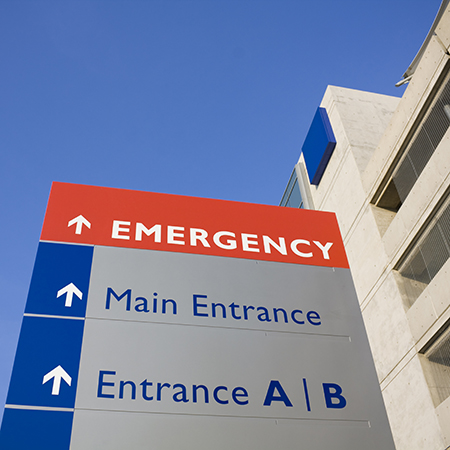A joint statement, issued by several representative healthcare organisations* together with the Patients Association, has set out a series of proposals to reform urgent and emergency care (UEC).
Every winter, the NHS faces immense pressure, with poor standards of care becoming an expected part of the winter crisis. The NHS has to prepare for winter pressures with short-term measures to cope with increased demand, but the statement advocates for mid- and long-term actions, planned well in advance. It identifies four core issues at the heart of the crisis and proposes practical and achievable solutions for meaningful, long-term improvement.
These are:
• Insufficient capacity in primary care to meet patient demand
• Patients who are the most frequent users of urgent and emergency care are not being proactively looked after to stop them becoming so unwell
• Fragmentation in NHS urgent and emergency care makes it difficult to navigate patients to the best place to receive the care they need
• Poor patient flow into and out of hospital beds creates congestion in the emergency department.
Increasing primary care capacity
The statement stresses the need to immediately ensure the uplift in funding promised by the government does translate into more GPs, and in subsequent years to increase the share of NHS funding going into general practice to match the increased workload from shifting the priority for care into the community rather than hospitals. Additional points include: cutting bureaucratic red tape for GPs so they have more time to spend with patients and supporting them to improve triage systems; requiring every Integrated Care Systems (ICS) to establish alert systems for general practice to flag unsafe levels of workload and allow practices to access support; aligning community services to each primary network to make better use of existing resources to focus on prevention; and making the best use of paramedics to support primary care in the community.
Improving proactive care
The statement recommends resource is needed so that every older person in a high risk group has a full health ‘MOT’ every year, which should include consideration of loneliness and isolation. It also suggests a GP- and community-led urgent care service for all people in residential and nursing homes should become the first point of contact rather than 999, delivering NHS care to these patients in their place of residence. Additional points include: a care plan for all patients on a palliative care pathway; identifying the highest users of UEC in each ICS footprint and agreeing a care plan for each; increasing support to patients in deprived communities by channelling spending to areas of greatest need; using AI to identify patients at high risk of emergency admission particularly with chronic breathing and cardiac conditions, and create bespoke care plans, including wearable devices, with pro-active monitoring; and consider making flu vaccination available to a broader group, subject to JCVI approval, and maximising uptake.
Re-joining urgent and emergency care
The statement argues for the creation of a single, 24/7 service for each ED catchment area, focused on caring for people in their normal place of residence and pulling together community response teams, virtual ward and ED teams into a single, multi-disciplinary team. Additional points include: allowing the ambulance service to do a fuller clinical assessment for all patients calling 999 who do not obviously need to go straight to an ED; patient medical records accessible to all; senior clinical decision making in the community as well as the ED environment; making it an expectation that community-based clinicians and hospital staff routinely discuss their patients to ensure they are receiving the right care; integrating urgent mental health services into ambulance, ED and 111 delivery; changing the flow of money to incentivise the system to work together; developing a workforce strategy for UEC; and creating an improvement culture through evaluating, learning and adapting initiatives.
Improving patient flow
The statement endorses arguments that fixing the problems in social care cannot wait until 2028 and says implementing many of the recommendations of the 2022 Cavendish review would be a good start. It adds that improved dietetic and therapy support are needed to maximise opportunities to prevent deconditioning of frail or elderly patients in hospital.
The detailed reforms set out in the statement are, the authors believe, achievable, with all concerned working together, and will produce improvements from as early as next winter. They urge the government to consider using their proposals as the foundation of a UEC Improvement Plan and insist they believe that both “corridor care” and “car park care” can be eliminated, alongside hospital handover delays.
* The Royal College of Emergency Medicine, the Royal College of General Practitioners, the College of Paramedics, the National Association of Primary Care and the Association of Ambulance Chief Executives










